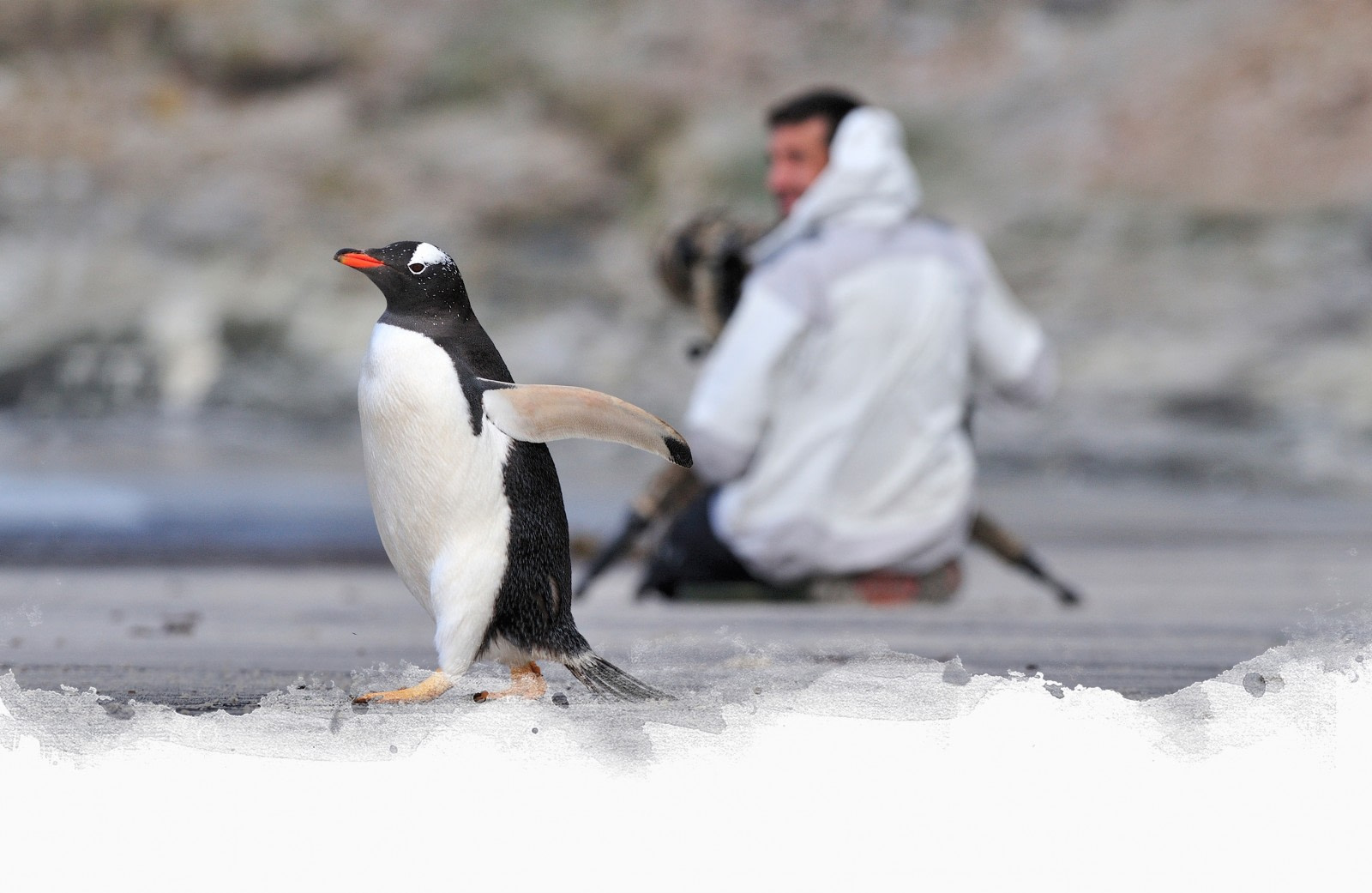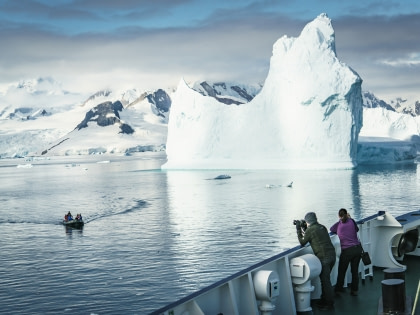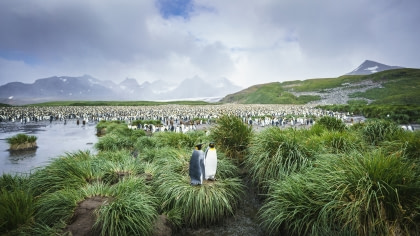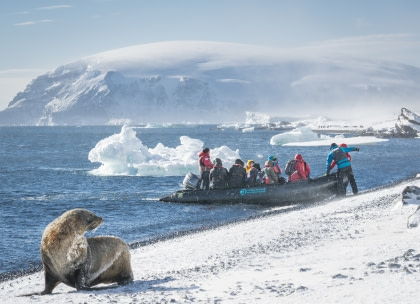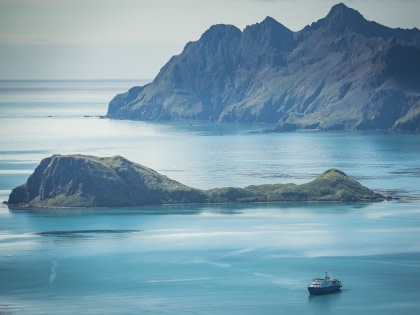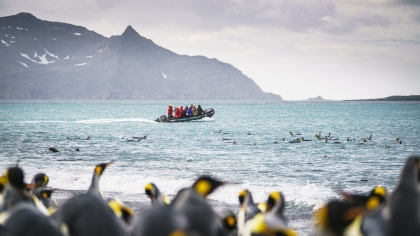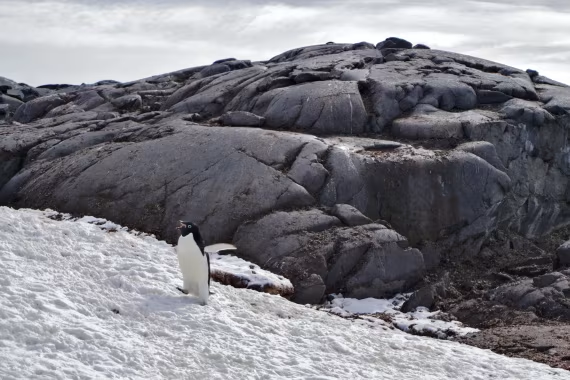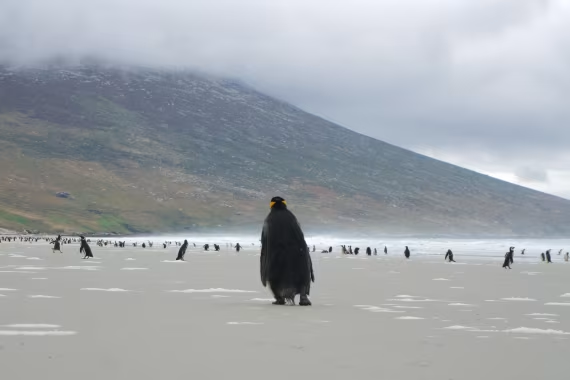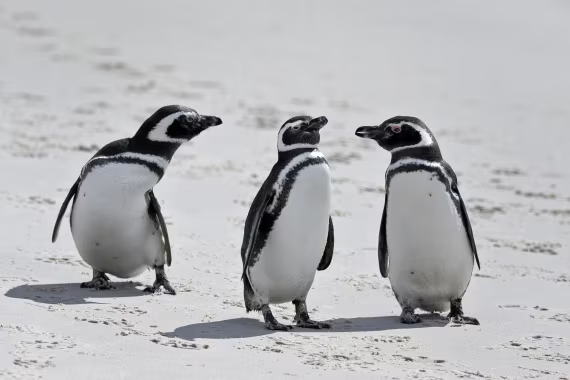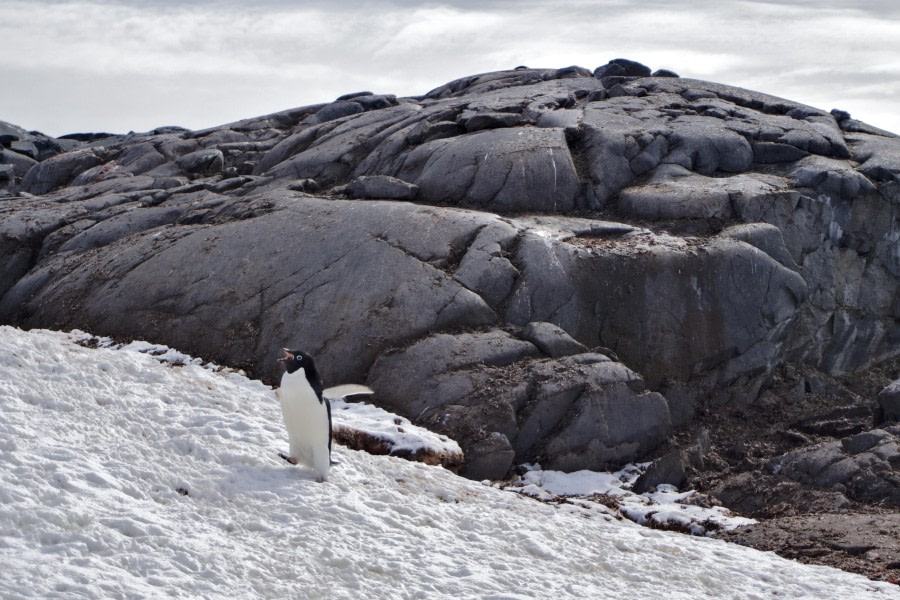Las aves más famosas de las Islas Malvinas son los pingüinos – Magallánicos, Papúa, de penacho amarillo, y Rey. Las islas son consideradas el sitio más importante del mundo para pingüinos de penacho amarillos. Se puede encontrar lobos marinos de dos pelos, elefantes marinos, y lobos marinos de un pelo reproduciendo en sus costas.
El océano circundante está repleto de vida marina. Las aguas albergan numerosas marsopas y delfines, y ballenas sei, ballenas de aleta y orcas pueden ser encontradas en las cercanías de las islas.
Las Malvinas son uno de los últimos destinos “fuera de las rutas establecidas”.
Cruceros a las Islas Malvinas
Islas Malvinas – Georgias del Sur – Península Antártica - Especial Fotográfico
22 oct. - 11 nov., 2025
•Código del viaje: OTL21-25
Un crucero a las islas Malvinas, las islas Georgias del Sur y la Península Antártica. Visite una de la más bellas exhibiciones de vida silvestre sobre la Tierra. Este viaje le permitirá conocer al menos 6 especies de pingüinos ¡y una gran cantidad de...
de: 14250 USD
Islas Malvinas – Georgias del Sur – Antártica
27 nov. - 16 dic., 2025
•Código del viaje: PLA23-25
Este crucero a las islas Malvinas, Georgias del Sur y Península Antártica es el sueño de los amantes del animales hecho realidad. Las expedición explora una de las últimas regiones indómitas sobre la Tierra – una tierra de bellos paisajes escarpados...
de: 14800 USD
Islas Malvinas – Georgias del Sur – Antártica
11 dic. - 29 dic., 2025
•Código del viaje: OTL25-26
Este crucero a las islas Malvinas, Georgias del Sur y Península Antártica es el sueño de los amantes del animales hecho realidad. Las expedición explora una de las últimas regiones indómitas sobre la Tierra – una tierra de bellos paisajes escarpados...
de: 14500 USD
Islas Malvinas – Georgias del Sur – Antártica
21 dic., 2025 - 8 ene., 2026
•Código del viaje: HDS25-26
Este crucero a las islas Malvinas, Georgias del Sur y Península Antártica es el sueño de los amantes del animales hecho realidad. Las expedición explora una de las últimas regiones indómitas sobre la Tierra – una tierra de bellos paisajes escarpados...
de: 15600 USD
Islas Malvinas – Georgias del Sur – Antártica
19 ene. - 6 feb., 2026
•Código del viaje: PLA27-26
Este crucero a las islas Malvinas, Georgias del Sur y Península Antártica es el sueño de los amantes del animales hecho realidad. Las expedición explora una de las últimas regiones indómitas sobre la Tierra – una tierra de bellos paisajes escarpados...
de: 16600 USD
Video de un crucero a las Islas Malvinas
Último blog e historia de un cliente
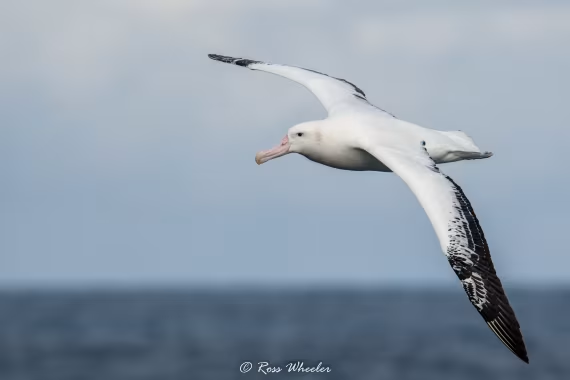
Los ocho albatros de la Antártida y el subantártico
Tanto si se dirige a la Antártida, al subantártico o a una combinación de ambos, esta entrada le proporcionará toda la información importante sobre los albatros, así como los mejores lugares para encontrar a estas aves.
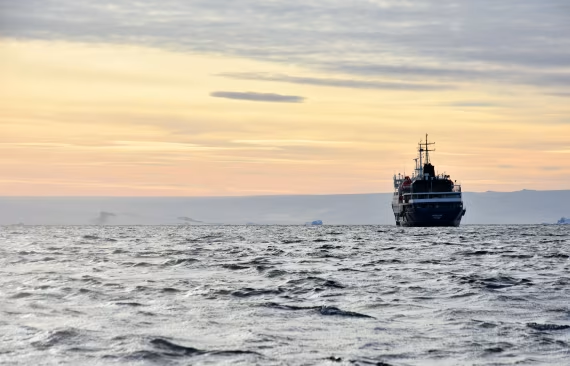
Antarctica and My Old Friend, Ortelius: Passenger Story by Ann Lane
I was on the recent Antarctic trip on Ortelius, 16 Feb - 7 March. This has been my third expedition with Oceanwide, and I continue to be very impressed by the experiences.
Lo más destacado y la vida salvaje
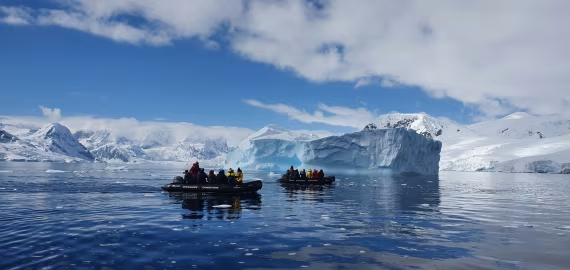
Vea los aspectos más destacados que puede experimentar:
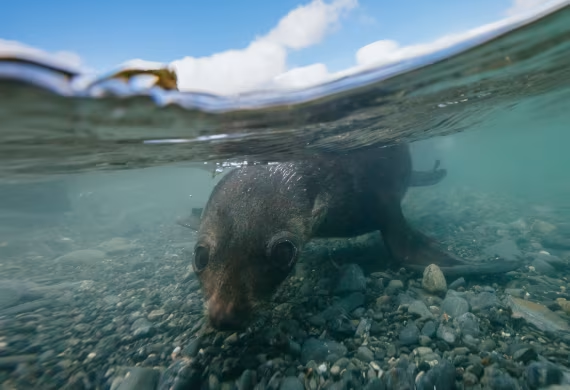
Vea los aspectos más destacados que puede experimentar:
Mapa de la Islas Malvinas
Fotos fantásticas Islas Malvinas
Reseñas de cruceros a las Islas Malvinas
Solo travel on Hondius Feb 2025 to Falkland, South Georgia and Antarctica. Saw 7 different Penguin species. Rockhopper, Gentoo, Magellanic, Macaroni, Adelie, Chinstrap & King Penguin. Saw different Whales as well. Minke Whale, Killer Whale / Orcas, Humpback Whales. Saw different birds. Saw different Seals. Fur Seals, Crab Eater Seals, Leopard Seals, Weddell Seals. Beautiful Landscape. Expedition Team great. Crew and Staff great. Love everything about my trip. Worth the money spent. Thanks for the trip log & slideshow. Food is great. Activities great. Love the zodiac cruise and landings.
My husband and I had an amazing 23 day journey to the Falklands + South Georgia + Antarctica! A huge part of this success came from the Oceanwide team — the ability of an expedition mindset allowed the team to be flexible and keep our best interests at heart. Whether that was prioritizing the safety of crew member during a med evacuation, or hopping out on the zodiacs earlier than expected because we came across a pod of 20+ orcas (1 of the biggest highlights of the trip!), the values of the staff speak volumes to the experience we had during our voyage. On and off board we had phenomenal service and communication. Everyone was incredibly kind, patient and knowledgable in their areas of expertise. We could not imagine going with another operator and had the trip of a life time! If you’re on the fence about booking, I say go for it!!! You have to experience the magic yourself :)
Islas Malvinas preguntas frecuentes
¿Cómo es la temperatura y el tiempo en las Islas Malvinas?
El clima en las Islas Malvinas es típicamente fresco, pero no hay muchas precipitaciones anuales, y la nieve no suele pegarse al suelo. Las cantidades de lluvia más pequeñas caen con regularidad.
Independientemente de la época del año en que viaje a las Islas Malvinas, no experimentará una temperatura inferior a los -5 a 24°C. La nubosidad es común, y esto minimiza el efecto de los largos días de verano.
Aunque el verano puede llegar a ser tan cálido como 24°C, la temperatura máxima media en enero y febrero es de 9°C. La media de las temperaturas máximas durante los meses de invierno es de 2 ºC.
¿Qué fauna puedo ver en las Islas Malvinas?
Cualquier persona que haga un viaje a las Islas Malvinas puede esperar ver un grupo de aves grande y diverso. De hecho, ésta es una de las principales fuentes de biodiversidad de la zona. Hay 16 especies de aves endémicas, y un total de 63 especies utilizan las Islas Malvinas para reproducirse.
Algunas de las especies más destacadas son el pingüino de penacho amarillo, los charranes sudamericanos y los albatros de ceja negra. Los viajeros también pueden ver lobos marinos de dos pelos antárticos y elefantes marinos del sur.
¿Cuál es la capital de las Islas Malvinas?
Stanley es la capital de las Islas Malvinas. Esta ciudad está situada en la isla de Malvinas Oriental y es el mayor asentamiento de la región. Stanley es el principal centro comercial de las Islas Malvinas. En 1843 se iniciaron los trabajos para convertir a Stanley en un asentamiento, y fue nombrada capital sólo dos años después.
¿Cuántas personas viven en las Islas Malvinas?
En 2012, las Islas Malvinas tenían 2.932 habitantes. Más de 2.100 de estas personas viven en Puerto Argentino, lo que deja al resto de las islas escasamente pobladas. Los residentes de las islas se denominan Falklanders, y suelen utilizar el nombre de "ciudad" cuando se refieren a Stanley. La mayoría de los residentes de la isla son nativos y descienden de ancestros británicos.
¿A quién pertenecen las Islas Malvinas?
Las Falklands (o Islas Malvinas) ejercieron su derecho a la autodeterminación en 2013 y votaron por mantener su estatus de territorio de ultramar del Reino Unido. La isla tiene su propio gobierno y es económicamente independiente.
¿Qué características únicas tienen las Islas Malvinas?
Muchos visitantes de las Islas Malvinas incluyen una parada en las Malvinas Occidentales durante su viaje. Varias islas de la zona albergan una gran variedad de aves reproductoras y colonias de pingüinos de penacho amarillo, albatros de ceja negra y cormoranes imperiales.
La mayoría de las islas son accidentadas y montañosas, lo que las convierte en un lugar interesante para explorar durante un crucero de expedición. Además, la biodiversidad de las Falklands’ hace que las islas sean una opción ideal para los amantes de las aves y la vida silvestre de todo el mundo.
Galería de fotos
Acerca de las
El clima de las Islas Malvinas
El clima general de las Islas Malvinas es bastante similar al que podemos encontrar en las Islas Británicas, excepto con más sol a lo largo del año. Sin embargo, las islas son bastante ventosas y el viento a veces puede traer frío, así que esté preparado para vestirse en capas.
Un día promedio de primavera en las Malvinas (entre octubre y noviembre) tendrá temperaturas alrededor de 10 ° C.
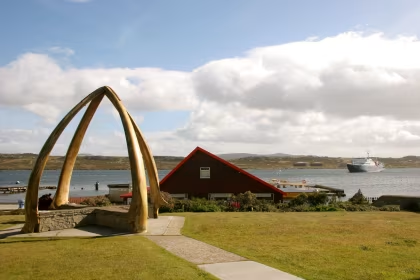
Datos acerca de las Islas Malvinas
- Las Malvinas cuentan con una población de casi 3000 personas.
- La mayoría de la gente que vive en Malvinas son descendientes de británicos y son conocidos como “Kelpers”.
- Las ovejas superan ampliamente la cantidad de habitantes de las islas, con una población de unos 500.000. Eso es alrededor de 166 ovejas por habitante.
- Hay un solo pueblo – Stanley, con una población de 2.100 habitantes.
- No hay árboles nativos en las islas. Todos los árboles que vea en las Malvinas fueron traídos de afuera.
- El 80% de la población mundial de albatros de ceja negra vive en las islas.
- Hay 5 especies de pingüinos que puede encontrar en su viaje a Malvinas.
Viajar a las Islas Malvinas
Únase a nosotros para realizar un viaje a las Islas Malvinas y explore algunas de las 778 islas e islotes que albergan una gran variedad de fauna. Su Expedición a las Islas Malvinas le ofrece una variedad de actividades que incluye caminatas por la costa, hiking, e incluso buceo para aquellos buceadores experimentados.
Unas vacaciones en las Malvinas son como una bonanza para los amantes de las aves –más de 220 especies de aves viven en las Malvinas o utilizan las islas para reproducir. Para aquellos que prefieren la fauna en el mar, cuando viajen a las Islas Malvinas tendrán la chance de encontrar una gran variedad de marsopas, delfines, leones marinos y ballenas.

